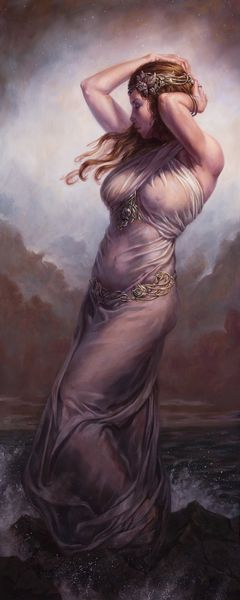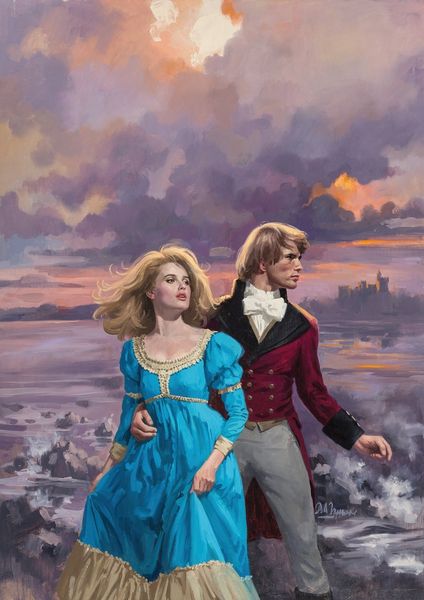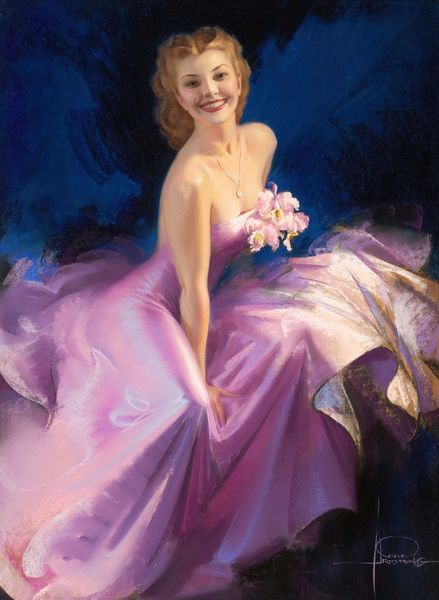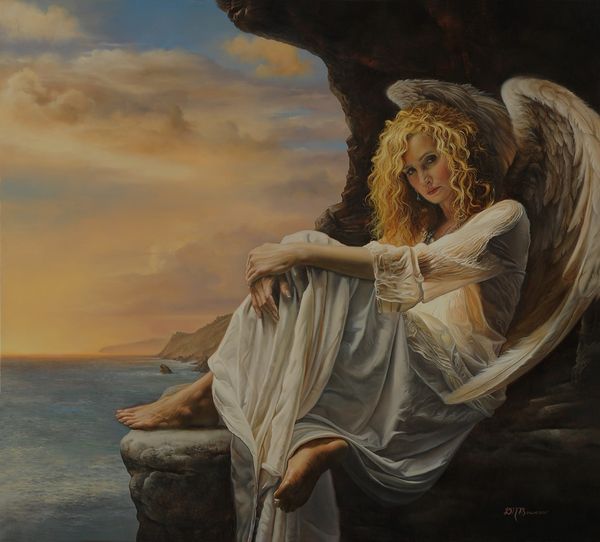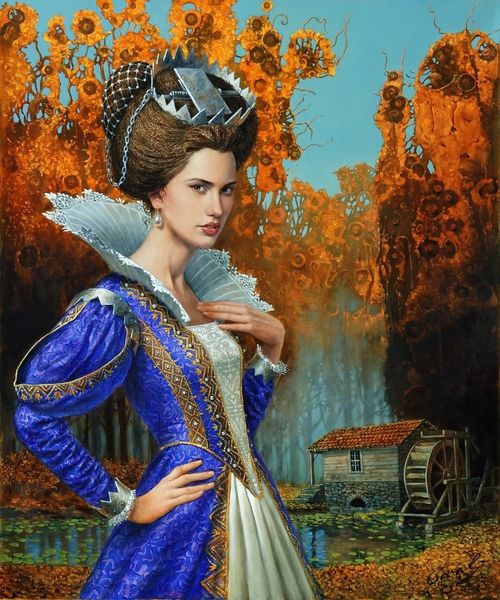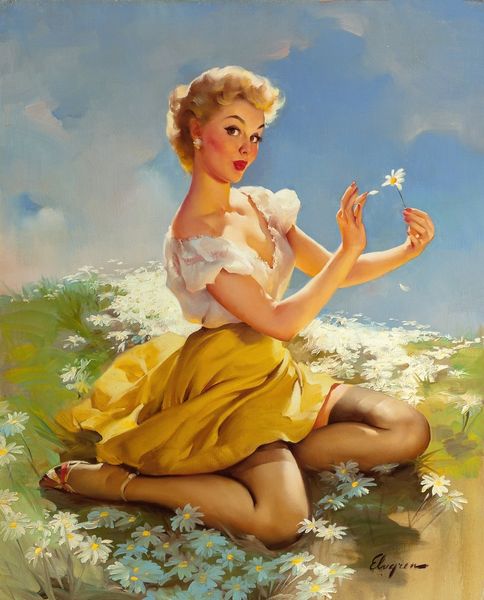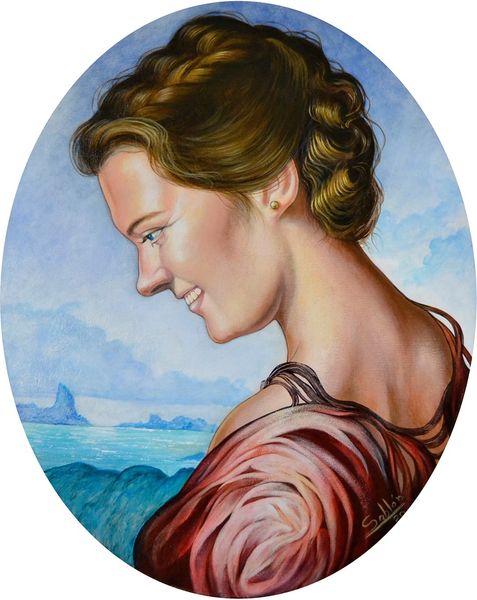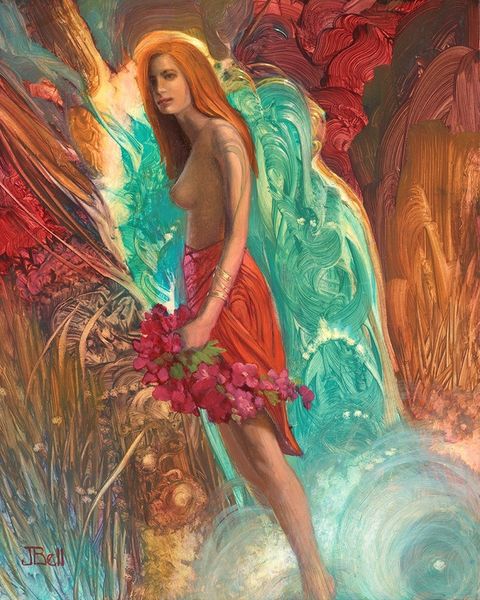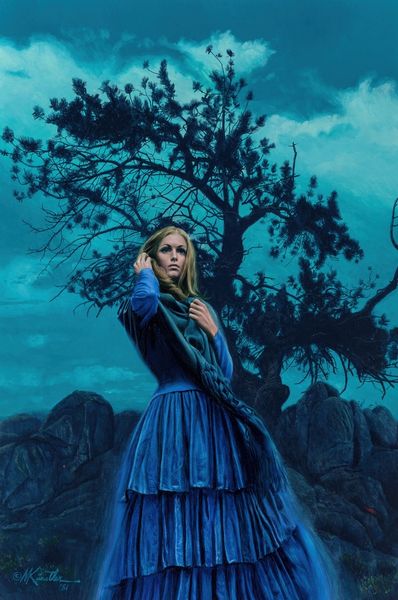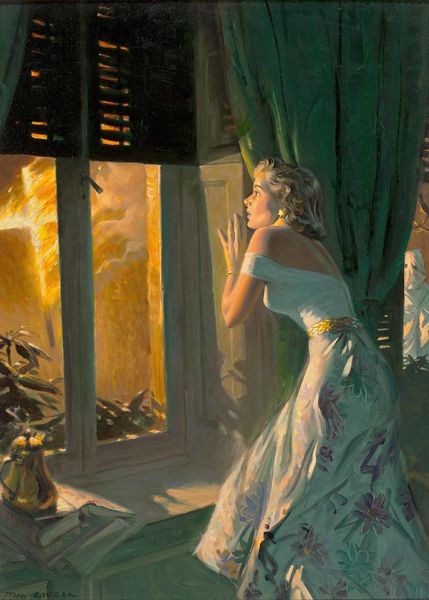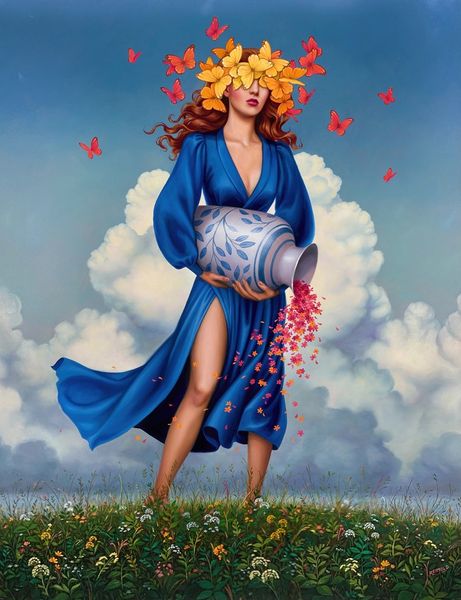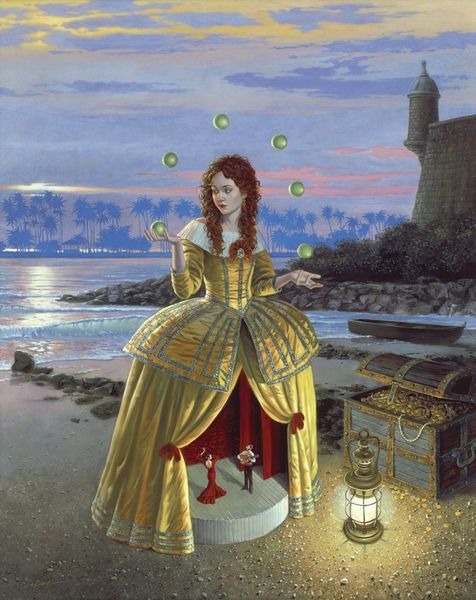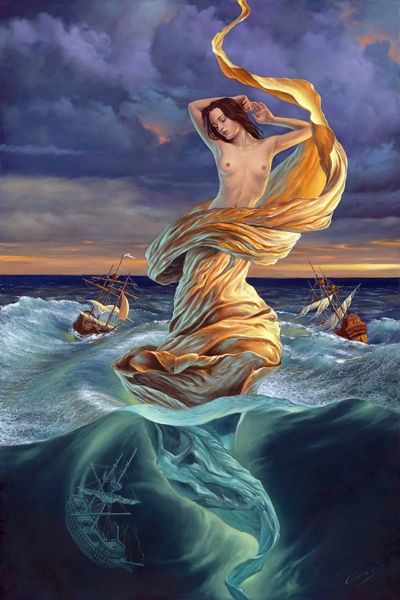
Copyright: Modern Artists: Artvee
Curator: Standing before us, we have Robert Maguire’s “Aurora Rose,” painted in 1989. It served as a romance paperback cover, showcasing Maguire’s talent for capturing the essence of that genre. Editor: My first thought is that there’s such a wistful atmosphere to it. The sun setting, her windswept hair... It speaks of longing. It feels very escapist. Curator: Definitely. And the image also echoes a broader historical fascination with representing women within landscape, a trope common across art history. We often see women, especially in the Romantic period, allegorized as representing Nature itself. It's interesting how Maguire reframes that within the context of popular fiction. The commodification of female image in mass media... Editor: So, it’s not simply about celebrating natural beauty but tapping into established narratives about idealized femininity, often defined through the male gaze and social pressures of romance. You can see that romantic aesthetic reflected in the composition. Her slightly melancholic profile is very suggestive, her pose passively waiting, while the historical landscape is suggestive of longing or change Curator: Precisely! Also, the use of ships in the harbor. Naval presence often symbolized power, trade, and even conflict, which plays with some readerships interested in themes of danger or adventure underlying the narrative. Did the woman, standing at the prow of change, actively or passively choose her fate? The color, which would typically be more luminous with warmth, here feels cooled down and melancholic Editor: It speaks to how art, even in commercial contexts like paperback covers, functions within power dynamics. While offering pleasure, it also subtly reinforces normative views about women, relationships, and societal expectations. Is she really free? She is in the promontory, yes, but who are the ships for and against? The fact we can see an artist like Maguire within the male fantasy world is troubling and worth exploring. Curator: A fascinating point! And to understand the politics of imagery, like here, also allows us insight into ourselves as audience. That said, as viewers today, we should appreciate this artwork as both aesthetic object and cultural artifact, to reflect critically upon. Editor: Agreed. This work opens an interesting view on art as a lens for reevaluating historical perspectives, especially gendered representations and the contexts that produced them.
Comments
No comments
Be the first to comment and join the conversation on the ultimate creative platform.

